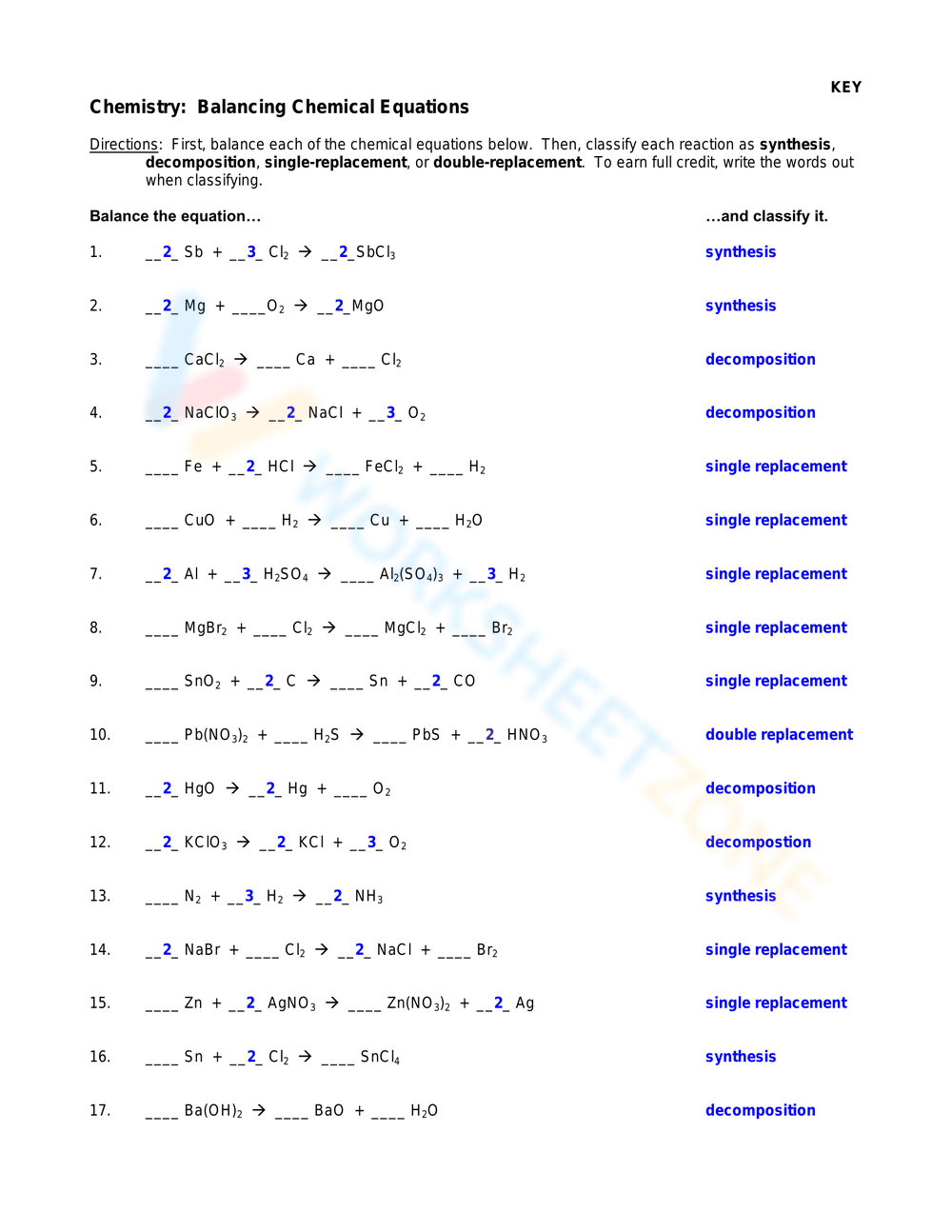In chemistry, balancing equations is an essential skill that allows us to understand the relationships between different substances in a chemical reaction. Balancing equations ensures that the number of atoms of each element is the same on both sides of the equation, maintaining the law of conservation of mass. To help students practice this skill, worksheets with equations to balance and answer keys are often used.
These worksheets typically contain a series of chemical equations that are unbalanced, and students are tasked with balancing them by adjusting the coefficients of the reactants and products. This process involves using mathematical principles to ensure that the number of atoms of each element is equal on both sides of the equation.
Here is a sample worksheet on balancing equations with an answer key:
1. H2 + O2 -> H2O (Unbalanced) – Answer: 2H2 + O2 -> 2H2O
2. C3H8 + O2 -> CO2 + H2O (Unbalanced) – Answer: C3H8 + 5O2 -> 3CO2 + 4H2O
3. Al + O2 -> Al2O3 (Unbalanced) – Answer: 4Al + 3O2 -> 2Al2O3
4. Fe + O2 -> Fe2O3 (Unbalanced) – Answer: 4Fe + 3O2 -> 2Fe2O3
5. N2 + H2 -> NH3 (Unbalanced) – Answer: N2 + 3H2 -> 2NH3
These equations are just a few examples of the types of problems students may encounter when practicing balancing chemical equations. By working through worksheets like these, students can improve their understanding of chemical reactions and develop their problem-solving skills.
Overall, balancing equations is a fundamental skill in chemistry that requires practice and patience. Worksheets with answer keys provide students with the opportunity to test their knowledge and receive immediate feedback on their progress. By consistently practicing this skill, students can become more proficient in balancing equations and gain a deeper understanding of chemical reactions.
